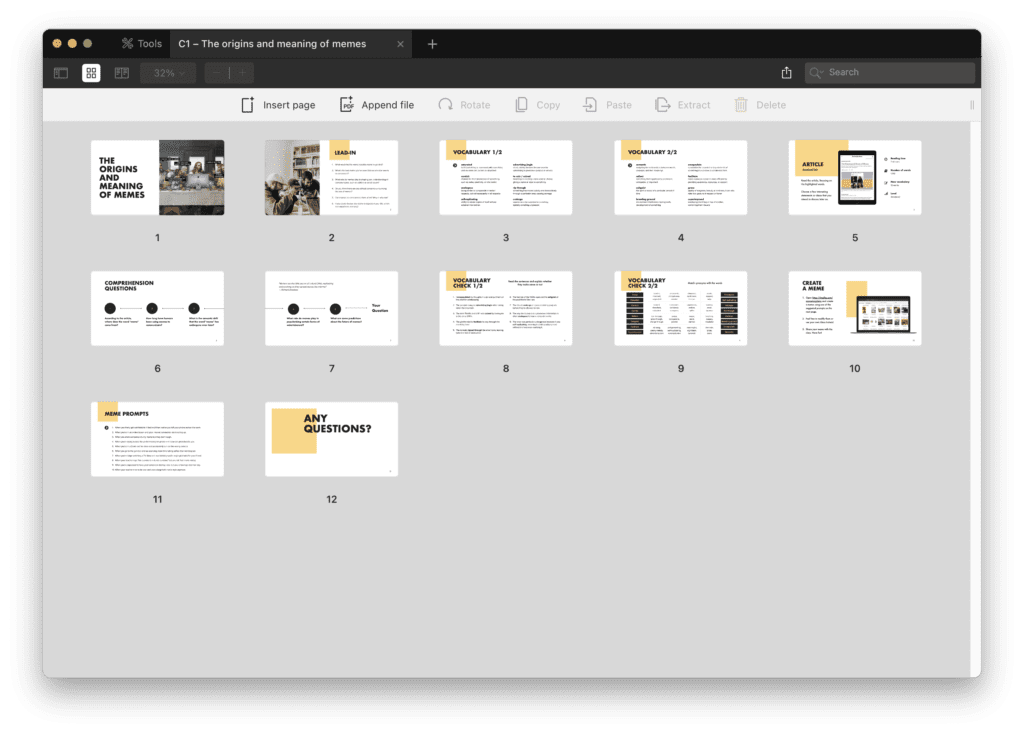The Origins and Meaning of Memes

Fun ESL lesson about the fascinating world of internet culture and memes based on the NY Times article. Unveiling the intricate layers of memes, the article delves into their evolution, impact, and significance in modern communication. Explore how memes bridge generational gaps, shape online conversations, and redefine how we express ideas in a fast-paced digital age.
| Level | Vocabulary | Reading time | Lesson Time |
| C1 / Advanced | 16 words | 7 min / 1250 words | 60-80 min |

Teaching guide
This is a flipped lesson. Before class, students need to preview the vocabulary from pages 3-4.
- Lead-In: In class, start by discussing the lead-in questions.
- Vocabulary: Go over the lesson vocabulary. If anyone needs help with the words, you can provide further explanations.
- Article reading and Comprehension questions: Students read the article (either individually or together). When everyone’s done reading, discuss some interesting takeaways and answer the comprehension questions on the next page. You can also talk about anything else that your students found interesting or thought-provoking.
- Vocabulary check: Students complete the vocabulary-related activities (sentences and collocations).
- Create a meme: The final slides of the lesson could be assigned as homework, or feel free to do it in the class, however keep in mind that this activity could be time consuming.
Vocabulary
- Saturated
- Conduits
- Analogous
- Self-replicating
- Advertising jingle
- Coined
- Rip through
- Undergo
- Semantic
- Salient
- Zeitgeist
- Breeding ground
- Encapsulate
- Facilitate
- Grace
- Superimposed
Contents
- Lead In
- Vocabulary 1
- Vocabulary 2
- Article reading
- Comprehension questions
- Vocabulary check 1
- Vocabulary check 2
- Create a meme



